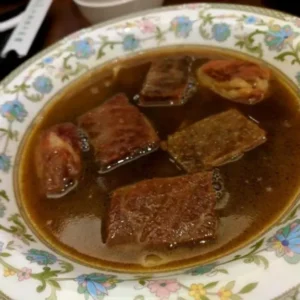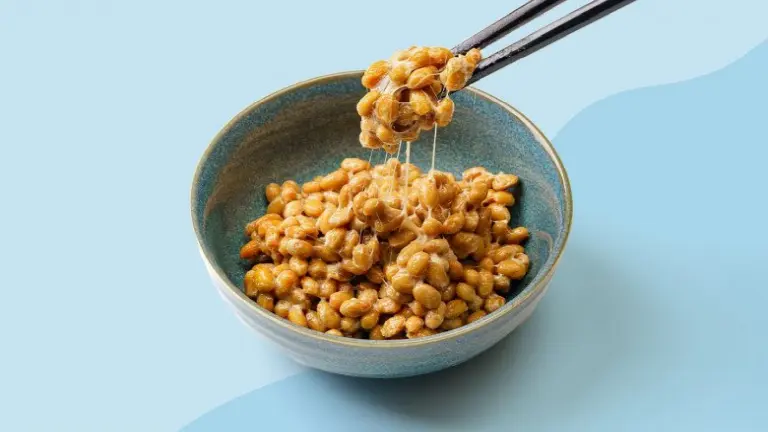On the rugged Italian island of Sardinia, perched like a jewel in the Mediterranean Sea, there exists a cheese so controversial, so peculiar, that it’s been dubbed “the world’s most dangerous cheese.” Locals whisper about it with pride, outsiders gawk at it in disbelief, and food adventurers consider it a rite of passage. Its name? Casu Marzu — literally, “rotten cheese.”
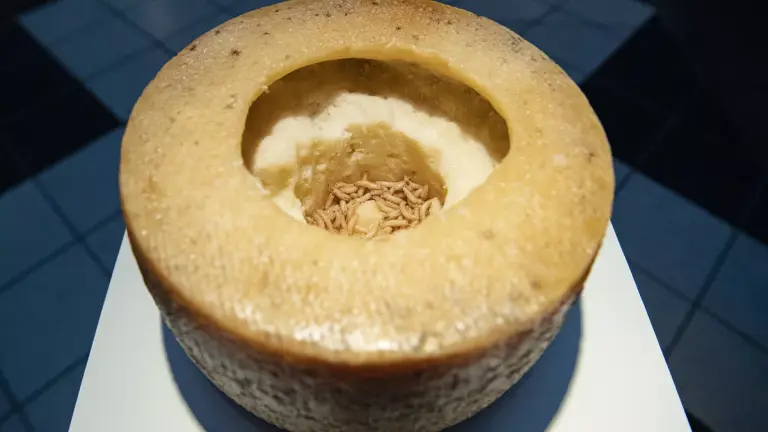
But to call it merely “rotten” is like calling fine wine “fermented grape juice.” There’s history here. There’s culture. And yes, there are maggots.
A Living Legacy
Casu Marzu begins its life innocently enough — as Pecorino Sardo, a firm, salty sheep’s milk cheese that’s beloved across Sardinia. But then comes the twist: during the aging process, locals introduce a tiny winged accomplice — the cheese fly (Piophila casei). The fly lays its eggs inside the cheese, and when the larvae hatch, they burrow and feast, breaking down fats and transforming the firm interior into a soft, almost liquid delicacy.
And that’s when things get interesting. The cheese is considered ready not when it hardens, but when it begins to weep. Locals call these oily tears “lagrima,” and they signal that the cheese has reached its flavorful peak — pungent, spicy, and spreadably smooth.

Dare You Eat It?
It’s not for the faint of heart. Open a wheel of Casu Marzu and you’ll see it squirm. Literally. The larvae can jump — up to 15 centimeters — which is why seasoned diners often shield their eyes.
Some say the maggots must be alive when eaten. Dead maggots mean the cheese has gone bad, or worse, dangerous. Others scoop them out, or suffocate them by sealing the cheese in a paper bag before consumption. Either way, there’s no pretending: this cheese is alive — and unapologetically so.
But here’s the thing. Beneath the shock lies a remarkable depth of flavor. The cheese is bold, earthy, with a zing that dances on the tongue. It’s best enjoyed with pane carasau, a thin Sardinian flatbread, and a strong red wine like Cannonau. For many Sardinians, it’s not just food — it’s tradition.
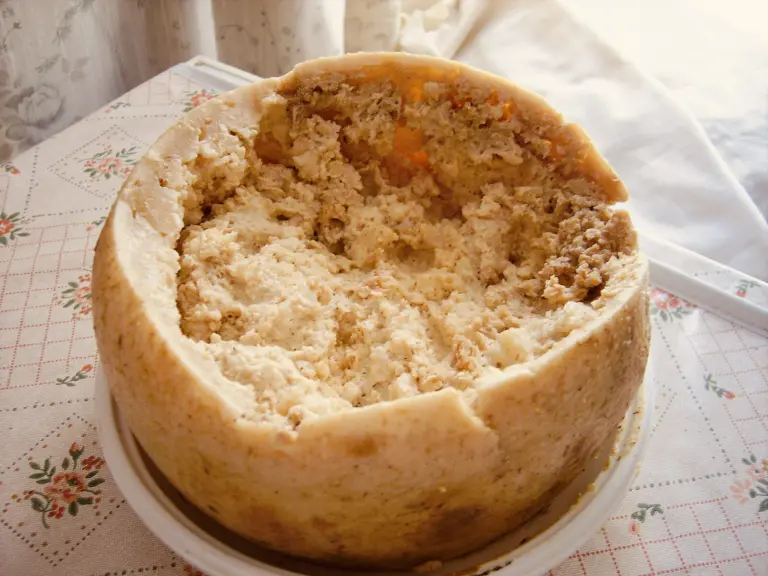
Banned, But Not Forgotten
Unsurprisingly, Casu Marzu has run afoul of European food safety regulations. Selling it is illegal across the EU. There are concerns — however rare — that the larvae could survive digestion and cause intestinal issues. But for locals, the ban has only made the cheese more legendary.
Production continues quietly, passed from generation to generation in rural villages. Researchers from Sardinia’s University of Sassari have even explored ways to make the cheese safely and legally, developing a sterile method of fly breeding. But red tape still holds it back from a proper comeback.
Still, demand persists. Whether sold under the table or shared at weddings and festivals, Casu Marzu remains a symbol of cultural resilience — of a people unwilling to let bureaucracy erase their heritage.
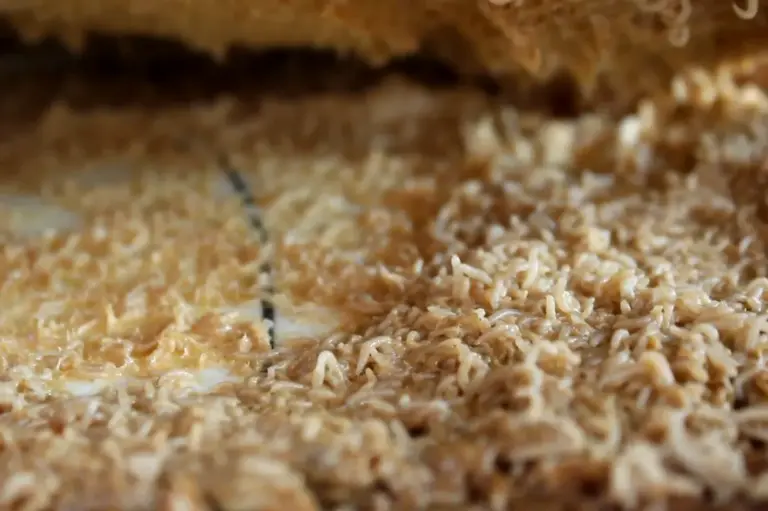
Tourism with a Twist
While Sardinia is known for its turquoise beaches and Bronze Age ruins, Casu Marzu is quietly becoming a draw for culinary thrill-seekers. Food tourism is booming worldwide, and this cheese has all the makings of a viral bucket list item: it’s rare, it’s illegal in most places, and it’s alive.
Some agritourism farms and hidden culinary tours now offer visitors a chance to taste Casu Marzu under controlled, traditional settings. It’s not on the official menu, but with the right guide, curious tourists can get a glimpse — and a bite — of this secretive delicacy. For Sardinia, this presents an untapped opportunity: to celebrate its food identity not just through pristine plates, but through bold, ancient traditions that challenge and fascinate.
Promoting Casu Marzu doesn’t mean making it mainstream. It means making it meaningful — as part of a deeper, immersive travel experience where people connect not only with flavors but with stories.

More Than a Cheese
To outsiders, Casu Marzu is a curiosity — a bizarre food item that makes for viral videos and dares on travel shows. But to Sardinians, it’s a statement. A defiance of modern sanitization. A preservation of the wild, natural processes that once defined our diets.
It’s a reminder that not all foods are meant to be safe, easy, or neat. Some are meant to be alive. And in Casu Marzu, life and food are inseparable — wriggling, oozing, and entirely unforgettable.
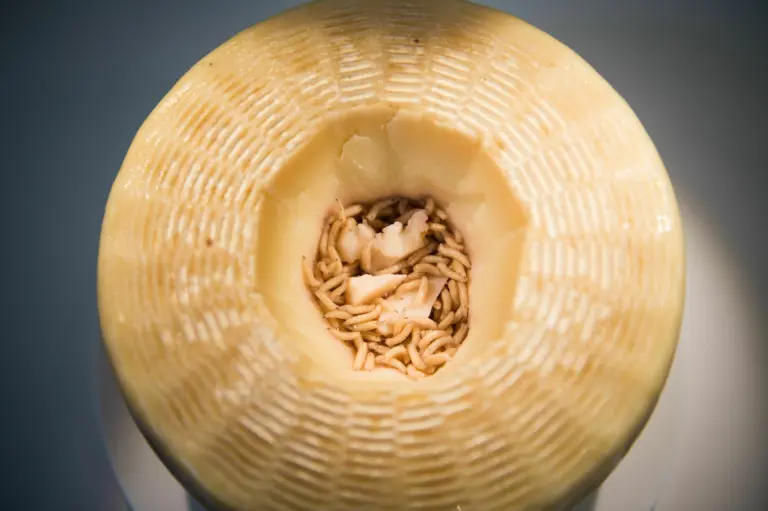
Final Bite
Would you try it?
Whether you’re an epicurean thrill-seeker or a squeamish spectator, Casu Marzu forces a reaction. It’s a cheese that challenges the definition of edibility, celebrates microbial alchemy, and embodies the rebellious soul of Sardinia. It’s banned, bizarre — and for those who dare — bizarrely delicious.
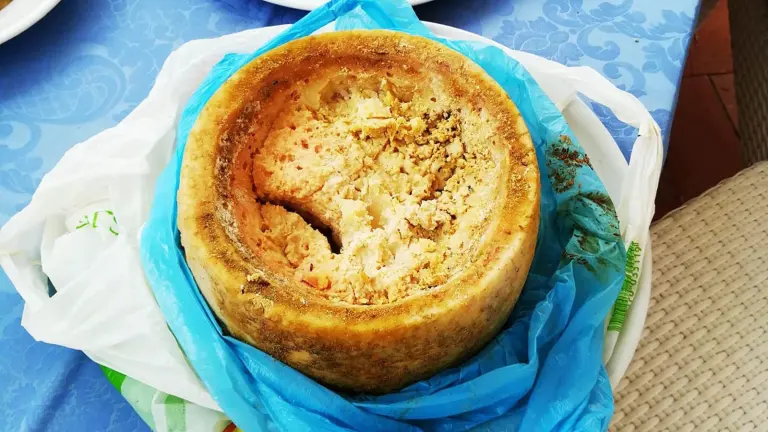
For Sardinia, it’s more than a dish. It’s a story waiting to be tasted — if you’re brave enough to take a bite.


